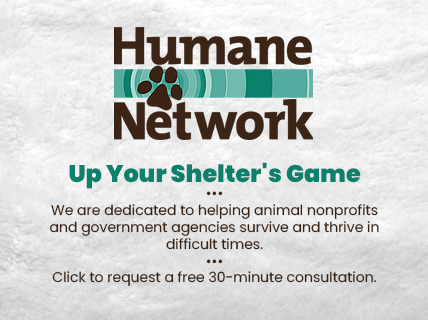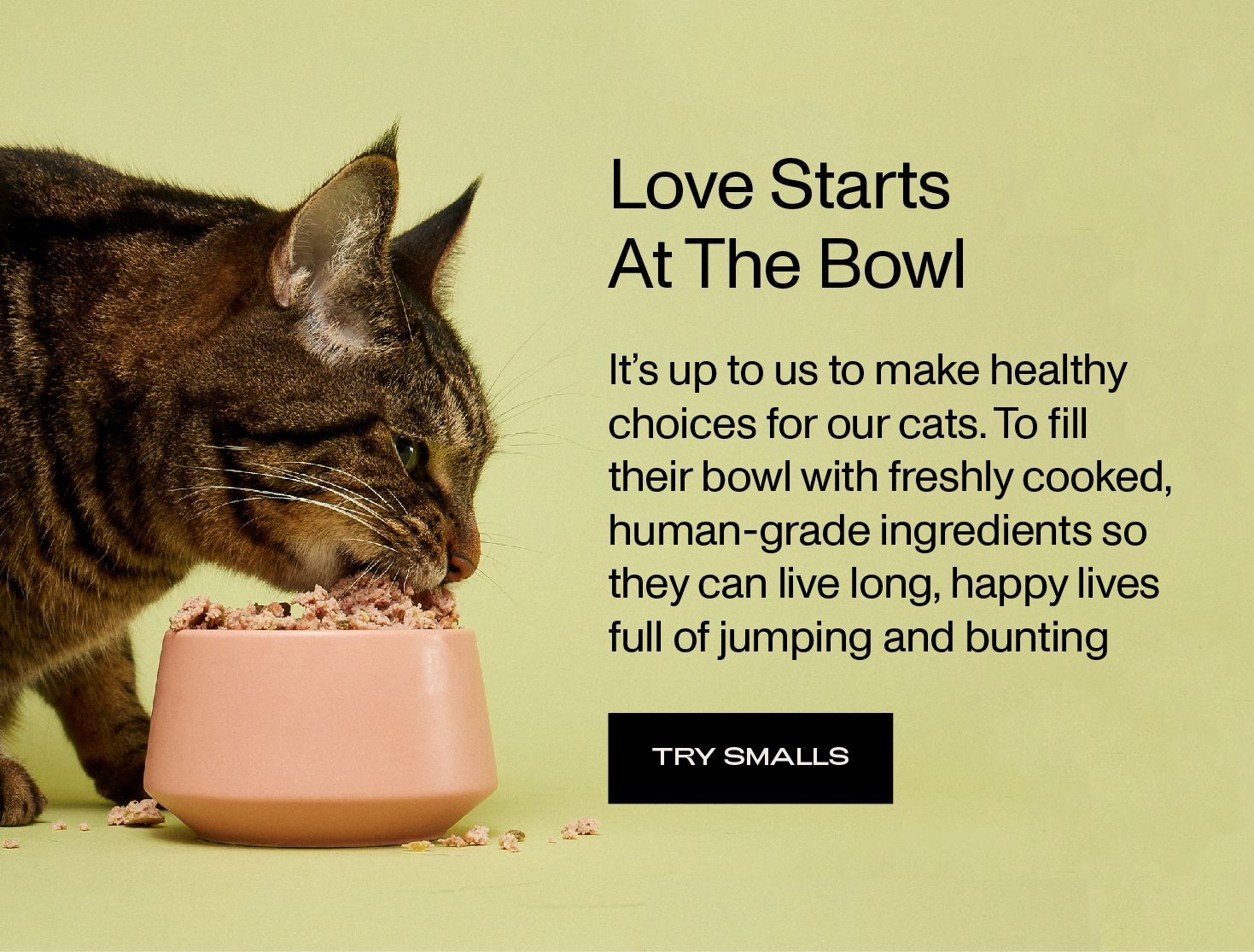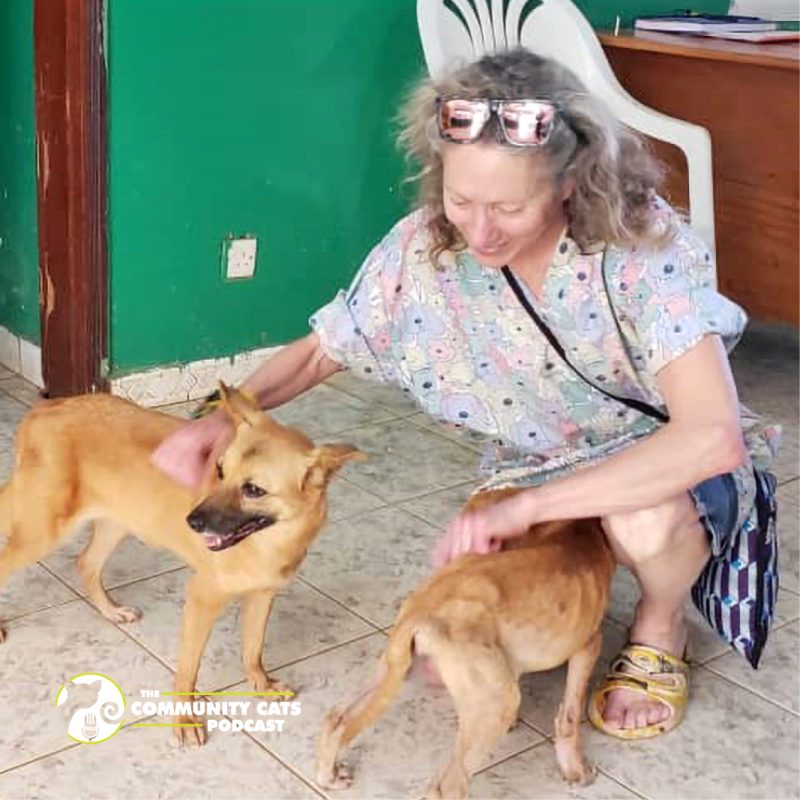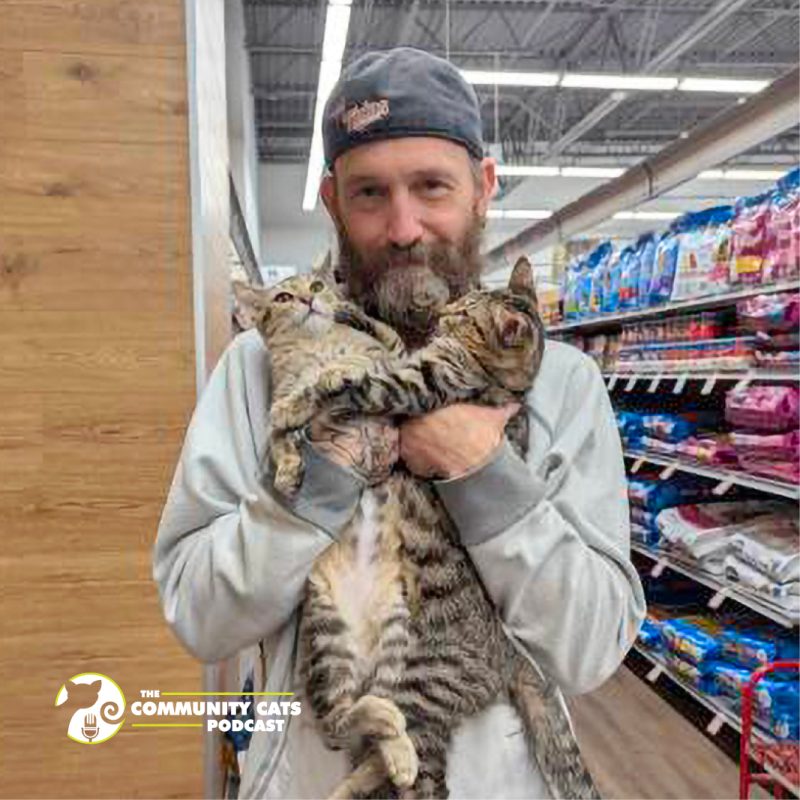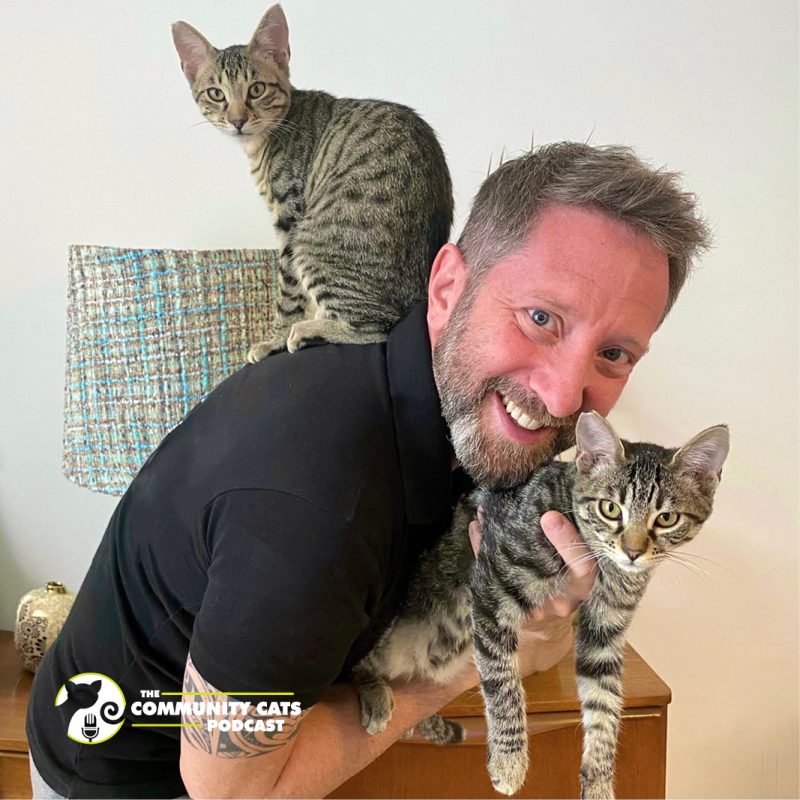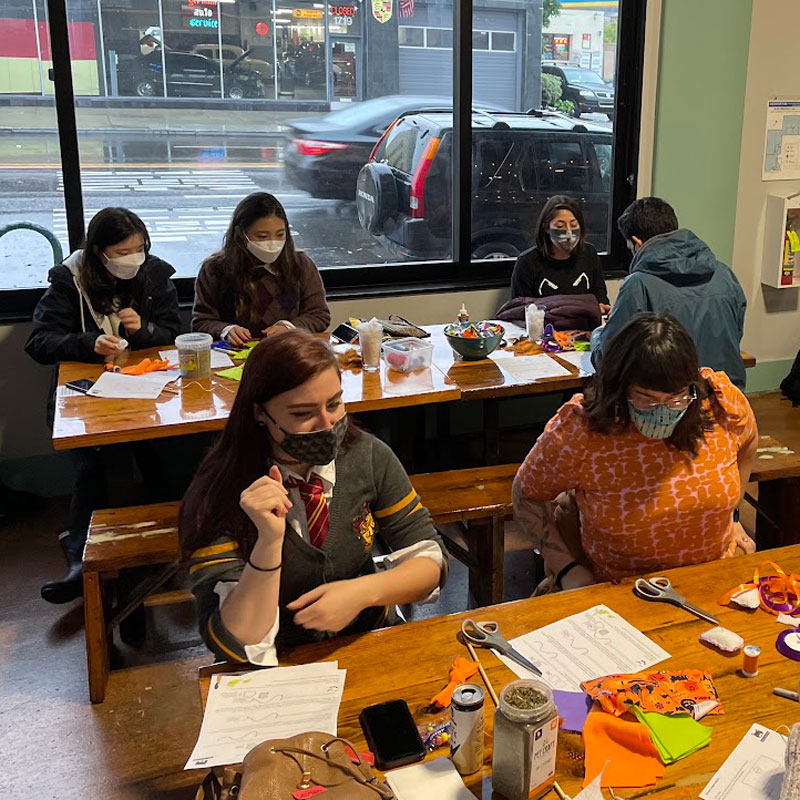
A Community Cats Grants Program Update: Group 13 Seized the Moment!
December 16, 2021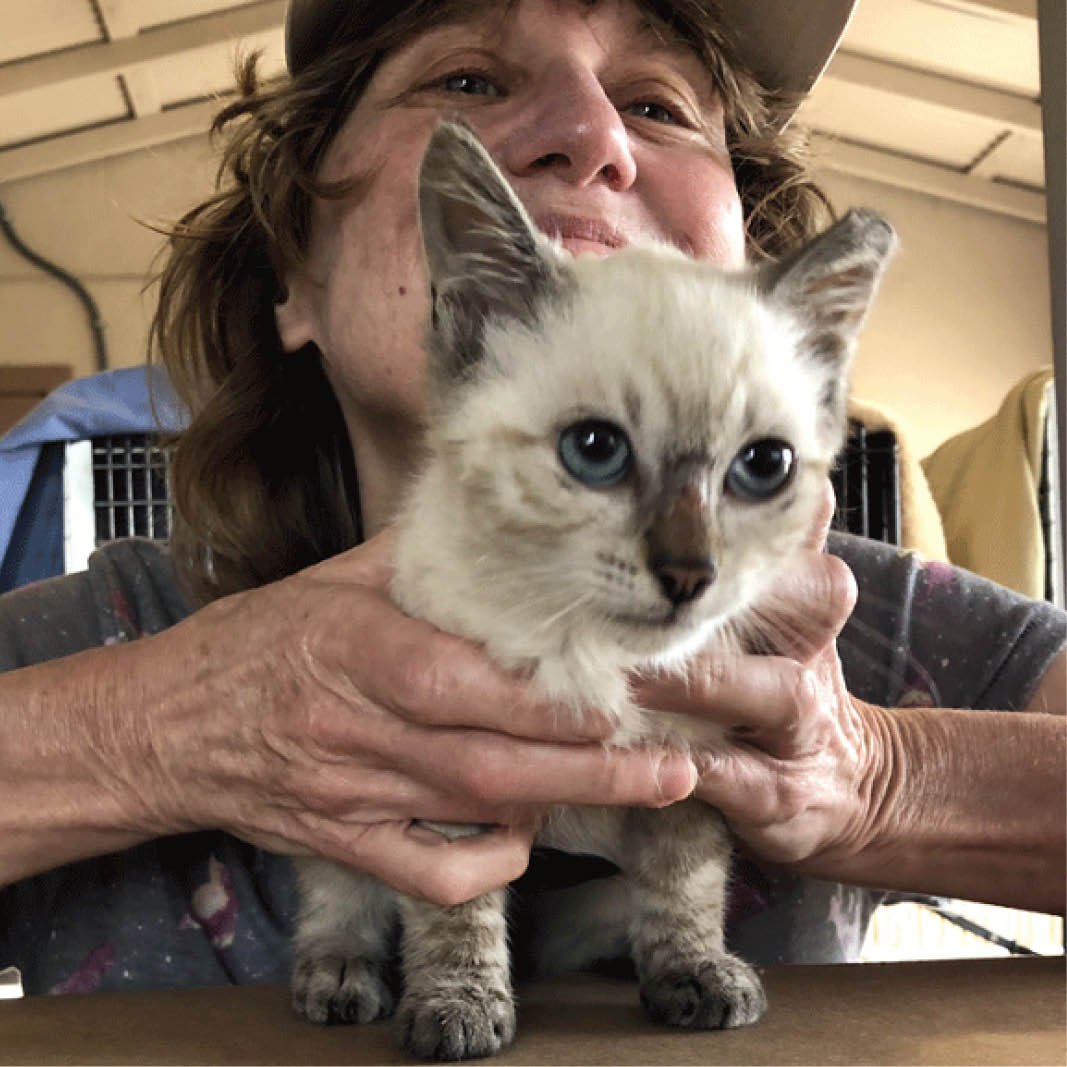
Bryan Kortis and Susan Richmond, Colony Care Taking Tips and Tricks Part 2
December 28, 2021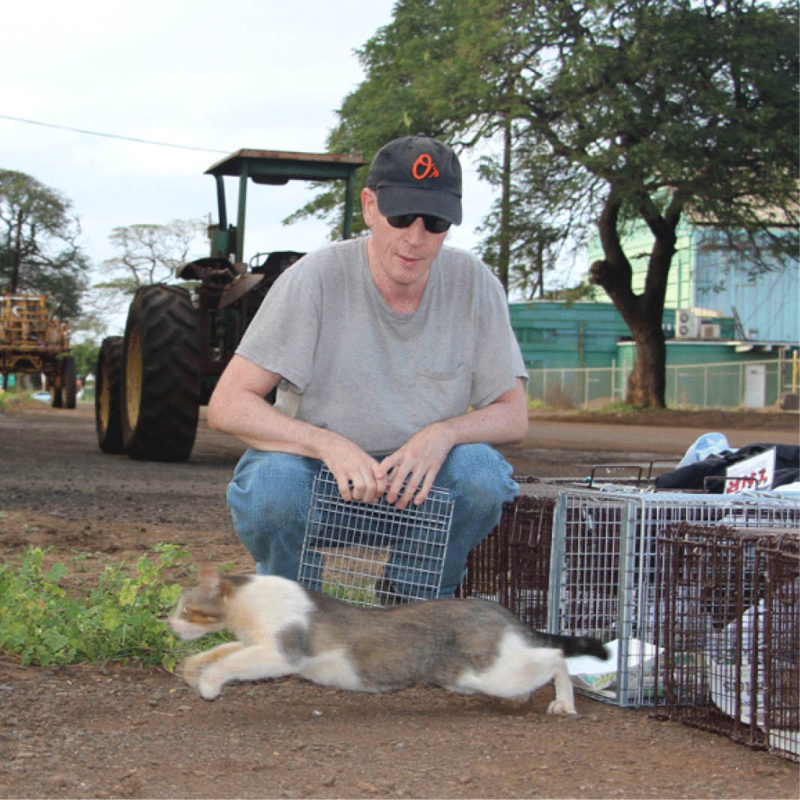
“The bond that is formed between the cats and their carer is all about food… The cats learn, pretty quickly, who is feeding them, and the attachment forms from there.”
Listen to Episode #435 Now
This episode is sponsored in part by Humane Network and Doobert.com.
In part one of the Colony Caretaking webinar Bryan Kortis explores the bond between the cat and caretaker. He covers best practices such as feeding patterns, types of food, and nutritional content for the value of the food offered. He talks about what caretakers can do so as not to disturb neighbors or create a neighborhood nuisance at the feeding site.
Bryan explains the variables like weather and wildlife (feral chickens? Yep!) that must be factored into both a trapping session and the colony’s well-being. Feeding stations and locations are covered as well as the specific needs that caretakers face with winter feeding, watering, and care.
Session Presenters:
- Susan Richmond Executive Director, Neighborhood Cats
- Bryan Kortis National Programs Director, Neighborhood Cats
Notes:
Learn more about Neighborhoodcats.org. Follow them on Facebook, Instagram and view more of their content on Vimeo. Be sure to follow the Community Cats Podcast on Facebook, Instagram and YouTube.
Read Episode #435 Now
Kristen Petrie [00:00:02]
You’ve tuned in to the Community Cats Podcast. Ready? Let's go.
Stacy LeBaron [00:00:13]
Welcome to the Community Cats Podcast. I am your host, Stacy LeBaron. I've been involved helping homeless cats for over 20 years with the Merrimack River Feline Rescue Society. The goal of this podcast is to expose you to amazing people who are improving the lives of cats. I hope these interviews will help you learn how you can turn your passion for cats into action.
And this week’s show is going to be an audio recording of our most recent webinar we did in partnership with Neighborhood Cats called “Colony Caretaking Tips and Tricks”. The information in these free webinars is really fantastic and I encourage you to check it out. If you want to see the video, feel free to go to communitycatspodcast.com/community-cat-care-training-education. So it’s community cat care training education tab on our website. Go check that out. Feel free to find out more about Neighborhood Cats at Neighborhoodcats.org. They are a fantastic organization and they put on some incredible educational programs in partnership here with the Community Cats Podcast.
So this is going to be Part One of a two-part series that we are putting out to close out 2021 here at the Community Cats Podcast.
Just a couple other announcements, there are also, there’s just one week left to take advantage of our early-bird discount for the Online Cat Conference at sixty dollars. We have an incredible line-up this year and I really hope you can join us. We’ll be talking about diversity, spay/neuter, starting a TNR group, global cat issues, global community cat programs, so please join us at the Online Cat Conference. You can find out more at the communitycatspodcast.com website. And last but not least, don’t forget to stay feral and check out our t-shirts online at the Community Cats Podcast shop. Everybody enjoy the show, remember this is part one so don’t forget to tune in next week for our podcast for part two of “Colony Caretaking Tips and Tricks”
Stacy [00:02:19]
Good afternoon, or good morning everybody. This is Stacy with the Community Cats Podcast with the folks at Neighborhood Cats. For those of you that don’t know about the Community Cats Podcast, we’ve produced over four hundred podcast episodes and we would love for you to become a subscriber today at communitycatspodcast.com. We have lots of other events, lots of educational information so feel free to go there and check out the details. So, at this point in time I would like to introduce our co-presenters. We have Brian Kortis and we have Susie Richmond.
Susie Richmond is the executive director of Neighborhood Cats. She joined the organization after over 20 years, running a major New York City shelter and non-profit veterinary clinic at Neighborhood Cats. She has led multiple large, targeted TNR
projects in New York City and northern New Jersey, managed a program for providing scholarships to veterinarians for training and high volume spay/neuter of community cats and co-authored the Humane Society of the United States online course on TNR. In her spare time, she can often be found trapping feral cats on Maui.
Brian Kortis is co-founder and National Programs Director for Neighborhood Cats, a leading community cat advocacy group with hands-on programs in New York City, New Jersey, and Maui. Currently he and his wife, Susie, live in Hawaii and can usually be found trapping cats and releasing them after they've been neutered. In between stints with Neighborhood Cats, he served as a grants manager for PetSmart Charities, overseeing over twenty-one million dollars in TNR and spay/neuter projects. He has produced many of the leading educational materials on trap-neuter-return, including award winning books and videos. Brian has a Bachelor of Arts degree from Cornell University and a JD from the University of California at Berkeley.
I'd like to welcome Suzy and Brian, and Brian, I'm looking forward to this presentation.
Brian Kortis [00:03:59]
OK, great, thank you for the great introduction, Stacy. And thank you, everybody, for taking time out today. So, let's, let's get right into the subject matter. When we're talking about colony caretaking, the bond that is formed between the cats and their carer is all about food. And that's what usually people first get involved with a group of cats that they come upon, because they're hungry or they are concerned that they're not being properly fed. Then, of course, the cats learn pretty quickly who's feeding them. The attachment forms from there. They get to know and they get to trust the people who are feeding them. So, food and feeding is really central to the caretaker, outdoor cat relationship.
So, let's talk about best practices. First, we'll talk about when is the optimal time to be feeding. What we encourage people to do is to establish a feeding pattern. That's taking into account that cats are very habitual creatures. And if you have pet cats at home, which I'm sure most of you do, you know that they're very routinized and if you try to sleep late one morning past their normal breakfast time, you know how routinized they are because they just won't let you do it. So, outdoor cats that live in the community are just the same. They're just as habitual and they will learn that the food appears at this time and at this place and they'll show up just before. So, when you're doing a feeding pattern, you want to keep it to as close as possible, to the same time, same place. Ideally, like, if you could feed at dusk every day or six pm, whatever it might be, they'll start showing up at five-thirty, some of them maybe even a little earlier, but they'll all be there at six when the food comes out. They'll eat, you'll be able to clean it up twenty- thirty minutes later and that will be it.
Some people can't be that precise, then you narrow the window during which they're fed as much as possible. So you feed them in the morning or you feed them when you get home from work, whatever it might be. What you want to avoid is twenty-four seven, having food out all the time so that the cats learn that whenever they feel like it, they can come by and have a snack to eat. The reason for that is because it helps you to monitor the colony. If they all show up at the same time you could see what's going on. Does anybody need some extra care? If a new cat shows up and you need to trap him or her, then it really comes in handy because you don't have to sit there hoping that a cat shows up. You know exactly when they're going to be there. One trick is while you're getting them on a feeding pattern, if they're not already, is do some type of clicker training. Make some type of a unique sound that they learn to associate with the feeding. And that will come in very handy also when you're trapping or you want to try to get a look at somebody and they're not there right away. If you use that sound, it will draw them out and it's particularly helpful when it comes to trapping them.
So what do you feed them? Let's talk a little bit about nutrition, you know, we're just going to get into the basics here. We could easily spend the whole webinar just talking about nutrition and food but it's still important for you guys to know the basics. So, when you want to know the nutritional value of any particular food, the first place you're gonna look is the ingredients label. The thing to understand is that the ingredients are listed in the order of volume. Whatever is the largest ingredient that's in the food the most, it's going to be first. So in this case you see beef followed by beef broth. Now I'm speaking in general but as a general rule, whole meats are more nutritious ingredients and less nutritious are going to be grains or some type of meat byproducts.
And the reason for that is because cats are what are called obligate carnivores. They have to eat meat in order to get the all the nutrition that they need. So if you have a food and the first largest ingredient is cornmeal, that will fill them up and make them feel full but it won't provide them with the nutrition that this particular can of food which is a whole meat. So keep a look on that. But there's definitely a relationship between the nutritional value of food and the cost of it. So, better foods with more whole meats and fewer byproducts or grains, do tend to be pricier and we'll talk more about, you know, how do you handle that? Now if you want to learn more about nutrition, there's a great book by Anitra Frazier, called “The Natural Cat”. And if you're interested at all in raw food diets, and especially do it yourself, this is a great book. It gives you, it's not hard to do but you need to have the right information so that you make something that's nutritionally balanced. Susie and I have been feeding our cats a raw food diet, for, oh, you know, many, many, many years and if you do it properly you end up with very healthy cats. And you can do the same thing for your colony cats or you can supplement. It's an inexpensive way to really boost their nutrition is to supplement it with raw meat. But again, you need to know what ingredients to mix in, the meat has to be extremely fresh, things like that.
So let's talk about wet food versus dry food. This sometimes can get to be very complicated conversations. You've got what we would call wet meat, right, canned food theoretically. And that's a hunk of meat that still, you know, it's been lightly seared, may still be a little bit raw inside but it's soft, it's juicy. And on the right, you have a piece of meat that's been baked to a crisp and is hard as a rock. So, I'm vegan so I don't do this but if you are going out to dinner and you are ordering steak, you know which would you rather have? What do you think would be more nutritious for you? So obviously the wet meat, right, because the baking process just destroys a lot of the food. The better foods, the better dry foods for cats will add vitamins and minerals in after the baking process to, even though it's lost a lot of nutritional value, they're able to add some of it back in. But the less expensive, the cheaper, dry foods put all the ingredients in before the baking process. So a lot of those vitamins and minerals end up being destroyed. So, that's why it's important to try to, at least, mix in some wet food when you're dealing with cats and not rely totally on a dry food diet.
But then we get to the question of cost. So obviously, dry food is much cheaper per pound or per, you know, what a cat needs than canned food is, so how do you balance those two things? And we like to use this formula, which is to choose the best quality and type, wet or dry, that you can comfortably afford. So that takes two very important things into account. One is nutrition matters but so does your budget. And if you're feeding twenty cats on a daily basis and you're not a millionaire, then you know, you may need to rely mostly on dry food. And that's fine. On the other hand, if you've got three cats in your backyard who are practically pets and it's not that big a deal to throw some canned food in there on a regular basis, and it doesn't hurt you financially, then that's what you do. So, it's all about the best you can do. And if you need to go out and buy twenty, thirty-pound bags of dry food that is, you know, not the premium brand because that's what you can afford that's great because, otherwise, these cats would go without anything. So, you know, don't judge yourself, just make a balanced decision between nutrition and affordability.
So, we asked this website, this group called allaboutcats.com. They're great about researching food and ingredients and things like that, so we asked them to recommend what is the best quality food in terms of price for feeding feral cats for, you know community cats? And this is a list of what they came up with. They're all dry food, they're all pretty good price per pound. Do notice that the Kirkland Signature Maintenance Cat Chicken and Rice formula, the second one listed there,
that’s Costco's store brand, so good reason to invest in a Costco membership. So for sixty dollars a year you get access to what is really a very good quality dry food at a very reasonable price.
Weather matters too, when you're trying to decide what kind of food. So, if you're in the wintertime then you're going to need to rely more on dry food if you're in a very cold climate because the canned food may freeze too quickly. So that's another factor that you need to take into account. Speaking of feeding in the winter, just so that you're aware, cats actually expend more calories in colder temperatures and that's because they move around more. So, the research suggests that they need about fifteen percent more food on a daily basis. So, however, the amount you are normally feeding the cats in the warm weather, you want to slightly increase that and make sure they get more calories in the wintertime.
So, where to feed is another question and ideally, low visibility should be a key factor and I'll give you my own situation as an example, back when I first started doing this work. So this kitty that you're seeing here, her name is Misty, and she and the rest of the colony lived in an empty lot that was accessible on the sidewalk, on the Upper West side of Manhattan. And at one point, the landlord, the owner of the property, was OK with me feeding but wasn't ok with me coming onto the property. So I used to have to put the food near the sidewalk and then I would use an arm grabber, an extender, to push the food out of arm's reach but it was still highly visible to anybody walking by and during those first two, three years, I would get cats abandoned at this site once, twice, three times a year. As soon as the property owner trusted me enough to give me a key, the first thing I did was make a pile of rocks and then started putting the food behind it so that people walking by couldn't see it and then I did not have an abandoned cat again. So, that's how much visibility matters. Also, it just, with community cats, there's always somebody who doesn't like them. And so out of sight, out of mind. Make sure it's safe for you. You don’t want it to be so inaccessible and quiet that you end up putting yourself in an isolated situation that you shouldn't be in. Also, if you're dealing in an area where there are threatened wildlife, rare, endangered or threatened species, you want to feed the cats as far away from their nesting areas or habitat as you can because that will reduce conflict between them.
So avoid putting food directly on the ground, where the canned food is placed directly on the curb. You may get so good at judging how much your cats eat that this isn't a problem and they gobble it all up. But if you miscalculate or for some reason, they're not all that hungry that day and you, and they walk away, you've got a real mess on your hands and that's something that you want to avoid. What you want to do is put the food on something that you can remove. It could be plastic plates, it could be just a piece of cardboard. Something that, when the feeding is done, and remember you're feeding during these windows of time, the cats learn that the food comes out at six, the food is gone by six thirty, they'll eat, you know, they don't need a half an hour to eat. Or if you're feeding twice a day, you know, whatever the time period that, like, you know, with your cats at home, if you feed them canned food, it's gone in five minutes or less.
So you want to be able to pick it up and clean. And just a tip, for all you cat people out there, all of us I should say, is the best surface to put food on is stainless steel. So stainless steel bowls or stainless steel dishes. And the reason for that is because it prevents feline acne. Cats usually get feline acne because the bottom of their chins rub against the plastic food bowl. And the food bowl picks up over time, it picks up bacteria that is very difficult to clean and get off of there. And then the cats get acne from it. If you use stainless steel bowls and dishes, they don't harbor bacteria and they're much easier to clean. So just a tip for you, with your outdoor cats and your indoor cats, try to use stainless steel whenever that's possible.
So, another thing to keep in mind when it comes to keeping things neat is the number one complaint that people will have when they object to cats in the area, is that the feeders are making a mess. I mean, who would want to live next to that, right? And it's not that hard to avoid this, you know, just pick up the empty bowls, you know, and keep it, keep it clean. If you can avoid using things like paper plates and stuff that easily blows away and gets all over the place, do that. Now one of the things I learned from feeding my colony was, I just picked up whatever garbage was there. It didn't matter whether I had put it there or not. I didn't pick up my garbage and leave the rest because the cats are going to get blamed for it, no matter who put it there. So keep the place neat and tidy and that'll go a long way in helping with good neighbor relations. And also keep in mind, never leave bags of trash on site that have any scent of food inside of them because they will get ripped open by wildlife and also bags that are not torn apart already could potentially get around a bird’s neck or some animal. So you want to be very careful about leaving any trash on site, just preferable is just to take it away and dispose of it.
Feeding stations are a great idea, if that's something that you can do. They just make things appear really neat. So, all the food, all the supplies, you can keep them inside your feeding station and out of sight. Also, it protects the food and the cats while they're eating, from the rain or the snow. Now, the big trick, when you're building a feeding station is don't build it like it's a winter shelter with one small or two small openings or, I should say, don’t have just one small one. Because you don't want, like a big, you know, tomcat, to go inside and decide, like, he's going to take a nap in there and he doesn't want to share the food and nobody else can get in. If you have a nice, big, large opening then they don't get territorial about it, and everybody can come and go. You can also take something large and cut multiple doors, so that there's more than one way in and out.
– Start mid-roll advertising-
Stacy [00:18:53]
Could your animal welfare organization use a tune-up? Humane Network can help. You can get a free thirty-minute consultation to talk through your challenges and get ideas on how your organization can be more successful with less stress. From board development and fundraising to strategic planning and operations, Humane Network has got you covered. Whether you’re a large or small, non-profit or government, it’s Alive and Thriving program, led by a certified animal behavior consultant, features specially designed training for shelter and clinic staff on enrichment, stress reduction, safe animal handling and behavior modification. With Humane Network, you receive individualized advice and support, customized to meet your organization’s unique needs. And Humane Network can lighten your load by taking on fundraising, communications, and other tasks you struggle with. Contact Humane Network today for a free thirty-minute consultation. Visit humanenetwork.org. That’s humanenetwork.org
Stacy [00:19:49]
Of course, you know that Doobert is the only software that helps you do transport, foster management and fundraising all in one place but did you know that Doobert has powerful e-commerce capabilities to let you sell your organization’s products? Forget paying for Shopify or trying to list your items on Facebook. With your Doobert account, you can list your organization’s products and even do auctions right from their rescue store module. Doobert manages your orders and all of the money goes directly into your
Paypal, making it super easy to manage. Check out the Doobert rescue store functionality today at www.doobert.com where they make animal rescue simple.
-End mid-roll advertising-
Brian [00:20:29]
I love working with colony caretakers because they're all such creative people when it comes down to solving problems. And here's some examples of feeding stations that work quite well. You can take a large trashcan then just put it on its side. You can take a storage bin, preferably all weather, take a box cutter and slowly trace an opening. Don't try to cut through all at once, just slowly trace with the knife an opening, a large opening like that. You can also get a small storage bin, that one has two doors, it has one on each side. There's also feeding stations if you just want to buy one and screw it together. There's a company called Feral Villa that's been around for years, and they make very high-quality products. You can see they have a large feeder and they have a small one. And then of course you can build your own if you're handy with wood and know some basic carpentry. You can build your own out of just plywood. Here's a tip
for those of you who really want to hide your feeding stations, you can use artificial rocks. These are hollow but are really quite realistic looking, and if you've got some money to spare, you can go to a company like Outdoor Essential Products and just purchase one. And get a jigsaw or somebody who's got a jigsaw and knows how to use it, to cut the opening on one side so the cats can get in and out. They are very lightweight, obviously, you can then feed in plain sight and nobody's going to see it. You can make these yourself if you're so inclined because they can be kind of pricey as they get larger and larger. So go onto YouTube and do a search for what you see there, how to make a hollow faux rock cover, and there's lots of great videos out there about how to make one of these things.
So let's talk about gravity feeders and auto waterers. Like what you see here is, uh, oh probably about it twenty, maybe ten-to-twenty pound dry food dispenser. So these obviously have the advantage of making food available at all times. The problem with that is, as you know in our discussion about feeding patterns, we kind of discourage leaving food out at all times but there may be occasions when you need to. So maybe you can only get to the colony site to feed two or three times a week. So in that case, it would be really important to have something like this or maybe you're going away for the weekend and you couldn't line up a substitute feeder. So you put this out preferably inside a feeding station, for the period of time you're gone. So they can be very, very useful in certain situations. One of the tricks is get the smallest size or, another way of saying it, only get the largest that you need. So, if your cats are going to go through five pounds of dry food in the interval during which you're not there, don't get a twenty-pound feeder and fill it up. Also, especially with water, don't get really large ones because then you're going to end up having to carry a lot of very heavy jugs of water, and cats generally don't drink that much. And a small auto waterer will work just as well as a very large one and be a lot easier to clean and maintain. So, yeah, just get the biggest one that you need. You can find these products either on Amazon or pet supply stores. And do keep in mind that they should be regularly cleaned, you know. Don't let them get crusted or moldy or anything like that.
So a few tricks for feeders, if you don't have a feeding station and it's about to rain, this is a good trick. You can take a takeout a bowl, like just go to your favorite takeout restaurant and save the bowl and the lid. And you fill the bowl and you take the lid and you put it on upside down so the lid blocks the rain from getting into the food but when it stops raining and the cats come out, it's very easy for them to just knock the lid off and start eating. Those vaults are great for storing food on site if you're able to do that. Keeps it real fresh, keeps the bugs out, keeps the rodents out, and keeps the food fresh. Now, I mentioned the arm extender and that's for reaching through fences or other hard to reach areas, and you can find these items in any number of different vendors.
So, clearing a path. In the wintertime, you want to be careful about what you put on the ground. So, rock salt and chemical de-icers, they can be highly irritating and even toxic to cats. So, after you're done shoveling and you want to keep the pathway to the feeding station open, this is a very safe solution that will keep the ground from icing over. So that's some Dawn dish detergent, rubbing alcohol, warm water, mix that up. And then you can spray it or even pour it on the ice to get it to go away. So, water in wintertime is really important. Again, we mentioned that you may need to rely more heavily on dry food so that increases the need for cats to have access to water. A healthy cat, you will hardly notice them drinking. They're desert animals by genetics. So, they need very, very little water but they do need some and they need it on a daily basis. So one trick you can do is if the cats are there, you got them on a good feeding pattern, they're all showing up. You can mix a little bit of water in their canned food, like, maybe a tablespoon per cat and mix it in. And then, if they’ll eat it real quickly that will be enough water for them. So, try doing that but if that doesn't work, there are all sorts of ways to either keep it from freezing or slow its freezing process. And here's some products you can buy. There's the Solar Sipper that you see on the upper left there that's designed actually for birds in wintertime. And you can get the current model at this site here solarflarelighting.com, and basically the bowl and the top of it are designed, in a way to capture the heat of the sun and stop the water from freezing until it gets below about twenty degrees. Electric heated water bowls are a sure fire way of stopping water from freezing but of course, they need an electrical outlet. Unless it's your own backyard or something like that, it'll be difficult to use them. The other thing to keep in mind with electric heated bowls is there's such a great disparity between the temperature of the water and the temperature of the cold air that the water does evaporate. So you have to see how often, you know, it shouldn't be more than once a day but you don't want to get a tiny one, whatever the size of this one is, I'm not sure I think it might be half a gallon or something like that. So you want one that holds a fair amount of water and then you need to top it off fairly regularly, as it evaporates. You can get plastic models that are much cheaper than this one but this is sort of the top of the line, you know, it's stainless steel and has a protected cord if you're interested in that. Then, there's a product called Snuggle Safe microwave heat pads and they're just meant for pet cats to give them something warm and toasty to lie on top of. But you can take these, stick them in the microwave, get them nice and warm, they'll hold the heat for a few hours and then put them underneath your food bowls and that will slow down the freezing process considerably.
If you're looking for do-it-yourself ways to go about this, here are some ideas. Again, these will not prevent freezing but they will significantly slow it down. So you can get a Styrofoam cooler, like the kind, you know, people put their soda or beer in, in the summertime, and cut a doorway in one of the shorter sides and put your water bowl inside it. And the Styrofoam will keep the cool air out long enough that the water will freeze a lot slower than if it was outside the Styrofoam cooler. Just make sure you buy these during the summertime because you won't be able to find them in winter.
The kind of bowl you use is really important too. What you want is a bowl that's deep and wide and has a thick plastic so there's really good insulation. So, the deeper the water, the less, the slower it will be to freeze but also the more surface area, the slower it will be to freeze. There's a trick that farmers use or ranchers use, I should say, with their horses in the meadows. They’ll take an old tire, fill it, the inner tube with rocks, and then put a metal bucket right in the middle and what happens is during the daytime, the rocks heat up. The inner tube captures the heat and the heat is conducted through the metal, and keeps the water from freezing. So, again, you can use that same idea on a smaller basis, you know, with your kitty cats. This is a great one that's real easy. So, you get a small Styrofoam box. Often vaccines, things like that, are packed in these really thick Styrofoam but very small containers. Line the inside of it with a plastic bag, could be any garbage bag, anything like that but basically, you're making it waterproof inside. Put the lid on and cut out a small opening in the lid so that the cats can then drink the water that's inside the box and that thick Styrofoam will slow the water freezing.
OK, let's talk a little bit about insects. Pretty easy to keep the ants out of the food if that's a problem for you and that's because of the notion that ants can't swim. So you just need to create a moat that has some little bit of water surrounding the food bowl and the ants will not be able to get to it, or any any insect that, you know, kinda crawls along on the ground and can't fly. It isn't going to be able to cross the water. So you can get food bowls that are specifically designed to be ant-proof. Just do a search on for ant-proof food bowls on Amazon and you'll see dozens of them. You can also just build your own. What you see in the slide here is a cookie sheet pan that has maybe a quarter of an inch of water poured into it and the bowl put in the center. And the cats can easily reach over to eat and the bugs cannot get to the food. Flies, that's often a problem in the summertime. So on really hot days, what you'll find is the flies are much more attracted to the canned food, the wet food, than they are to the dry. If you really, really have a fly problem, you may need to rely more on dry food for reason. But another good trick is flies sleep at night. So if you train the cats to eat at sundown, at least during the summertime when the flies are really at their most numerous, you can avoid that problem. Now for those of you again who are in more luxurious settings when it comes to colony caretaking, there is a product called the Sure Feed Sealed Pet Bowl, and it has a motion activated lid. And as the cat approaches the bowl, the lid automatically pulls back. When the cat walks away, the lid will automatically close. So that's a great way to keep the flies out of the food but of course, that's assuming you're feeding in a setting where this is a realistic option.
Let's talk about slugs. So with slugs, the way to keep them out of the food is to sprinkle something around the food bowl like a little circle of what is to them, a very sharp item, that they won't cross because it hurts. One of the best ones is called diatomaceous earth and when you touch it, it feels very, very soft, like, um, you know, a talcum powder
but it's actually made up of microscopic shells of these tiny little creatures. And they are quite sharp to something like a slug or an insect. And it will kill them if you sprinkle it on them so they won't cross it. They’ll realize that it's sharp and they’ll not cross the line. So if you take the diatomaceous earth and you kind of do a chalk like circle around your feeding area, the slugs will not cross that line. You can also try crushed egg shells or chalk powder, same idea. To us it feels very soft, to them it feels very sharp. You can put the food bowl on a large sheet of sandpaper. And then another idea that people often use is, they just feed the slugs. You just feed them separately. They don't eat very much food. And intelligence is such a fascinating thing because the slugs, if they have a choice between I can eat this food, this little bit of food on the ground, or I can crawl over there and climb up the food bowl, they're going to take the food on the ground. The one that, that's a lot less effort for them.
Now, when you're dealing with diatomaceous earth, two things to keep in mind. There's two different kinds of diatomaceous earth. There's what's called food grade, and then there's pool, P-O-O-L grade. So, you always want to use food grade. The pool grade can be very harmful to cats. The food grade, if they get a little bit on them, it won't hurt them. In fact, I have to verify this but I believe that farmers often use diatomaceous earth to kill parasites. They feed it to cows and it kills parasites internally without hurting the animals. Anyway for livestock, but you want to check on that. Don't try to do that with the cats. But the point is, it won't hurt them if they get any in them. But on the other hand, you don't want to inhale this stuff. Because remember, it's, they're tiny, tiny, sharp, little objects and it can be quite toxic and even deadly. If you were to inhale a large amount of that, you'd be basically cutting your lungs. So if you're spreading it a lot of it around and it's gonna get in the air, make sure you're wearing a mask. Try to use the tools they provide like the spreader. You know, basically just avoid working in a cloud of diatomaceous earth because that can really hurt you. Just be careful. It's great stuff. Just be careful using it.
You want to, of course, avoid attracting wildlife with your feeding. The easiest way to do that usually is to feed during the daylight because most wildlife, except for birds, are nocturnal. Of course, sometimes, you end up in these dilemmas because, as you'll recall, I just said, well, if you want to avoid the flies, then feed at night, and now I'm saying, well, if you want to avoid the raccoons feed during the day. But what if you have flies and raccoons so these are difficult issues to navigate. There's no, that becomes very site specific and maybe you can feed at dusk, or maybe you have to use a different way to keep the flies away or a different way to keep the racoons away. But in general, you can avoid wildlife by feeding mostly during the daytime. And we talked about feeding during a window of time so that you don't have to leave uneaten food behind. That will go a long way to keeping wildlife out of the cat food. And, of course, keeping the feeding area clean. So there's nothing for them to come along later, and scavenge through. Now, here's a really great way, if you do have raccoons who, even during the daytime, are invading your colony site. Sometimes that happens, you know, they're not dummies either and if they realize well the food’s around only during the day, they may just come out during the day. So, this is a raccoon proof feeder. And it's very effective for any kind of wildlife, that's great at climbing but can't jump vertically, meaning they can't jump up. Basically, you've got this platform on a pole, and the platform has this metal sheeting wrapped around it so that the raccoon, for example, could climb the pole but then they can't get a grip on the metal and they can't pull themselves up onto the feeding platform. And you'll notice there's a little jump off station
and again, that's for the cats. Maybe you've got some cats who are a little elderly. They can't jump quite as well. So that gives them a little boost. What you want to avoid is, and I've seen videos of this, racoons can jump horizontally. So if they can get onto a branch that's a few feet away and at the same height as the platform, they can jump across the gap and get onto the platform. They can only not jump up, so be careful of that if you use this. It's also good for, you know, opossums, skunks, you know, again, animals that can climb, but they can't jump up.
So, what about birds? So they're active during the daytime and inactive at night. So if you've only got birds to worry about, like pigeons in the city, then feeding at night when the birds all go to sleep is going to be the easiest way to deal with that. But if you have to feed during the daytime, you can create a feeding station with a door that looks like this. And that's just some thick plastic, maybe three millimeters or more thick, that you can get at a hardware store, or like, they go underneath tablecloths, and just cut them into strips and duct tape them over the doorway. So pigeons and other birds will certainly be bold enough to walk right in if the door’s open but they're very reluctant to push past the strips to go inside. Whereas cats figure it out very quickly and have no problem entering the feeding station. Also keep in mind that here in Maui, there's a very, very large feral chicken population. So often when we need to trap during the daytime, there'll be chickens around and the chickens are not afraid of the birds and, in fact, quite the opposite. The cats will shy away from the chickens. And if there's food in a trap, the chickens will just walk right in and gobble it and it's amazing how quickly they can eat that food. So what we've learned to do is to get cracked corn, which is very, very cheap stuff, chicken feed. And wherever we're trapping, ten yards away, we'll put a pile of the cracked corn and the chickens will go over there. So again, the idea of feeding them separately can often work to keep them out of the cat food.
Stacy [00:37:53]
That's it for this week. Please head over to Apple podcasts and leave a review. We love to hear what you think, and a five-star review really helps others find the show. You can also join the conversation with listeners, cat caretakers, and me on Facebook and Instagram. And don't forget to hit follow or subscribe on Spotify, Apple podcast, Google podcast, YouTube, Stitcher or wherever you listen to podcasts, so you don't miss a single show. Thanks for listening and thank you for everything that you do to help create a safe and healthy world for cats.
Kirsten [00:38:23]
Did you join us for Diversity Day or Fundraising Day? We’d like to take this opportunity to shout out some of our sponsors, who made these online educational opportunities possible. VetzPetz. Find out how VetzPetz is keeping happiness in motion at vetzpetz.com. That’s vetzpetz.com. And Humane Network. Learn more about their consulting services and certificate programs at humanenetwork.org.
If you or your organization is interested in sponsoring the podcast, or an online event like the upcoming Online Cat Conference or Online Kitten Conference, email stacy@communitycatspodcast.com for details.

